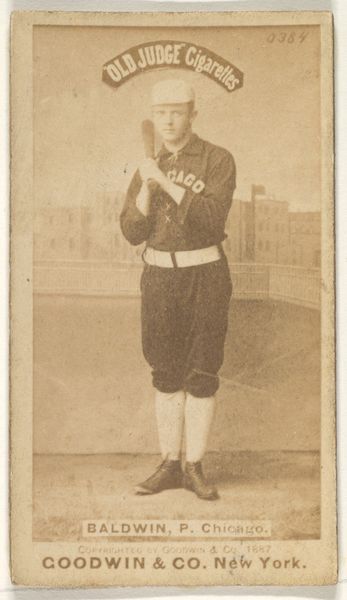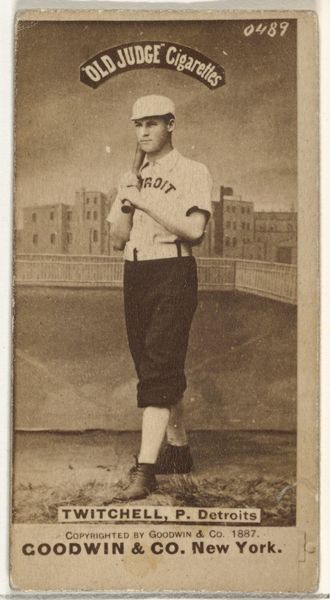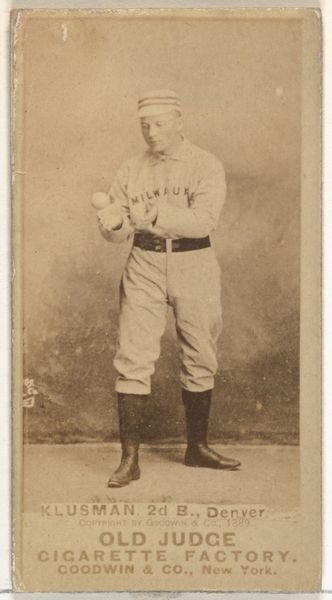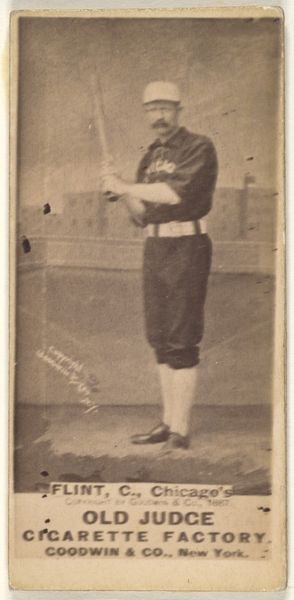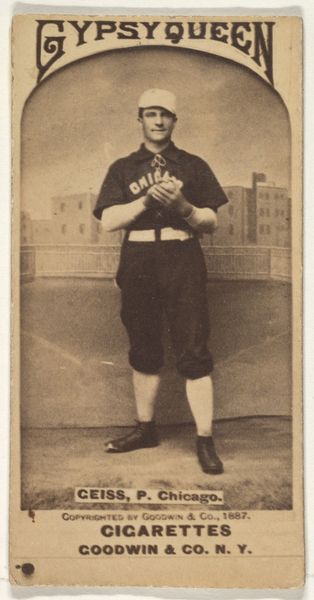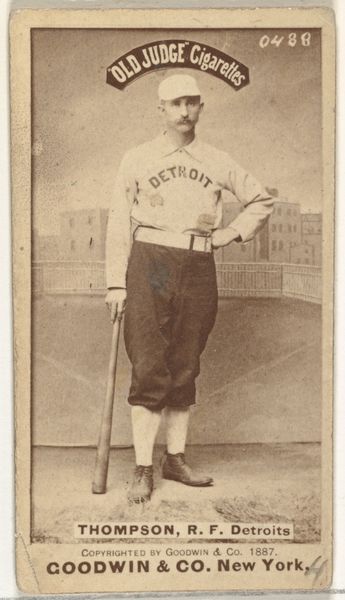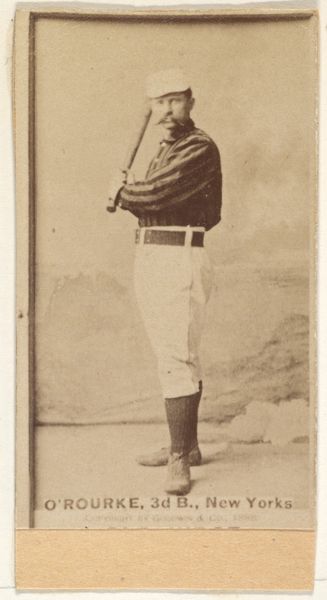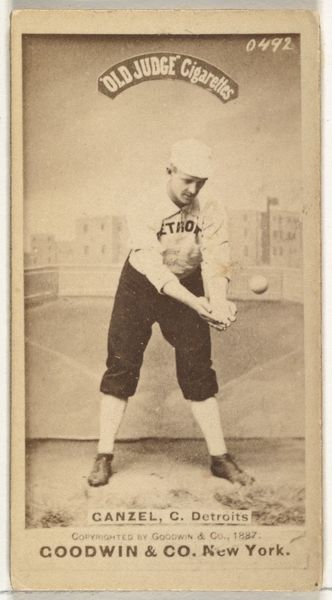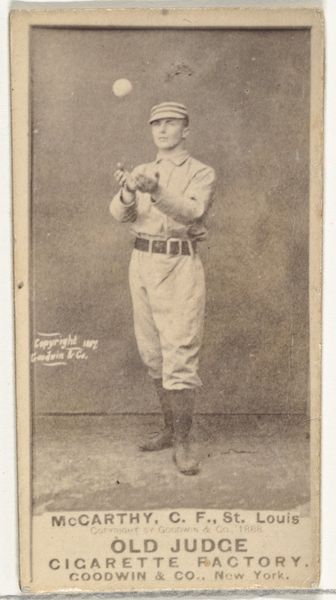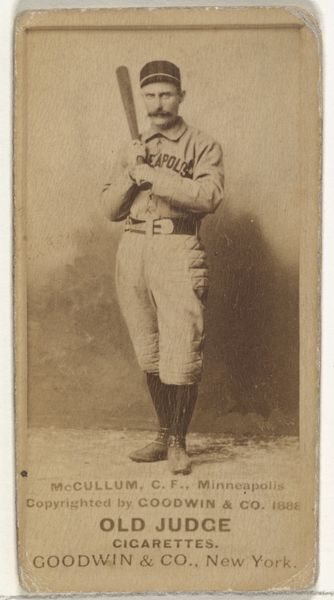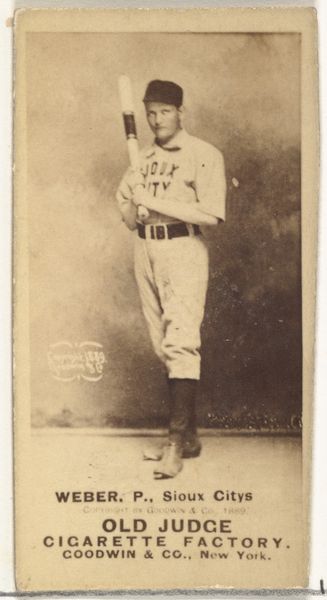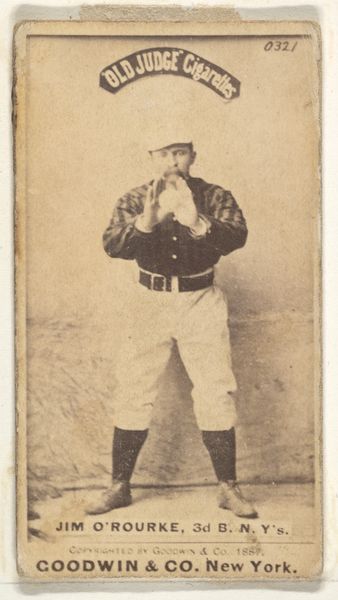
Fred "Dandelion" Pfeffer, 2nd Base, Chicago, from the Old Judge series (N172) for Old Judge Cigarettes 1887
0:00
0:00
drawing, print, photography, collotype
#
portrait
#
drawing
# print
#
baseball
#
photography
#
collotype
#
19th century
#
athlete
Dimensions: sheet: 2 11/16 x 1 3/8 in. (6.9 x 3.5 cm)
Copyright: Public Domain
Curator: Today, we’re looking at “Fred ‘Dandelion’ Pfeffer, 2nd Base, Chicago,” from the Old Judge series, circa 1887. These were collotype prints, originally distributed with Old Judge Cigarettes. Editor: The sepia tones give it an antiquated feel, of course. There’s something arresting in the symmetry of the baseball player, though his stare seems oddly vacant. Curator: Exactly. Produced by Goodwin & Company, these cards document the emergence of baseball as a commercial spectacle. Consider the collotype process, a photomechanical technique allowing mass production and wide distribution, which fundamentally transformed the relationship between athlete, image, and consumer culture. Editor: Focusing on its intrinsic qualities, the image presents Pfeffer almost iconographically. The vertical composition emphasizes his full figure, from his cap to his tightly laced shoes. There's a balance in the tones, highlighting the starkness of the uniform. Semiotically, it functions as a signifier of athleticism frozen in a single moment. Curator: But what is Pfeffer actually doing? The image lacks action; he simply holds the bat. This reveals more about the needs of capitalist marketing. The image circulated as a commodity to increase cigarette sales. The baseball cards are part of the transformation of working-class leisure into the spectacle we recognize today. Editor: The figure of Pfeffer, as presented, signifies more than just sport; his image becomes an object. Note the formal geometric quality and linear design implied within. The photograph is transformed through the reproducible technology into a formal exercise. Curator: Perhaps. I view these cards less as art and more as ephemeral documentation of the commodification of sport, tied to the history of industry and advertising. Editor: Despite these divergent ways of viewing it, I have found new elements in its formal aspects revealed. Curator: Yes, examining this piece really illuminates both its material reality and its design.
Comments
No comments
Be the first to comment and join the conversation on the ultimate creative platform.


